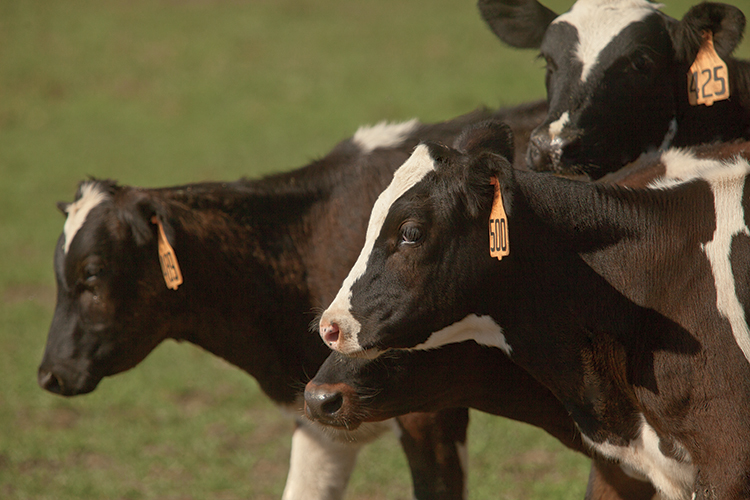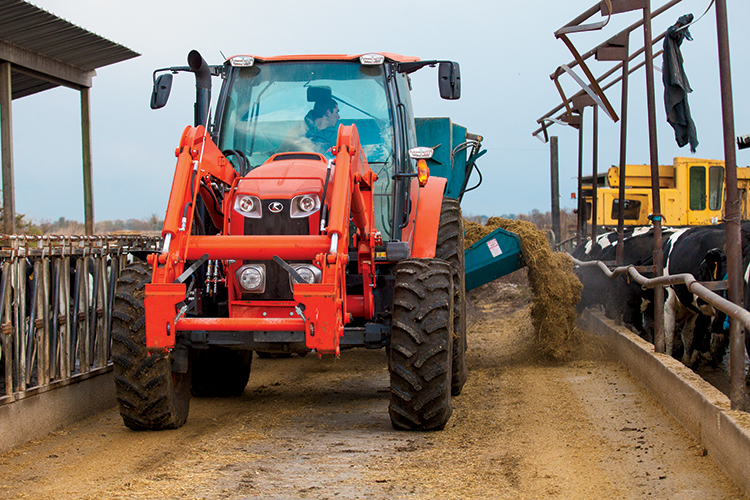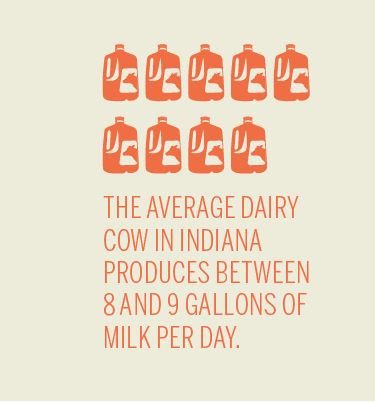Home > Indiana > Indiana Crops & Livestock > Indiana is Dairy Strong
Indiana is Dairy Strong
In partnership with: Indiana State Department of Agriculture

The alarm clock goes off before sunrise each morning at Troxel Dairy Farm in Hanna. There are calves to feed, pens to clean, manure to haul, bills to pay and cows to milk – 120 of them to be exact – so there’s no sleeping late for Tom and LuAnn Troxel, who begin milking at 5 a.m.
“We live right here on the farm, so we never clock out – work is always here,” says LuAnn, who married into the Troxel Dairy family 31 years ago. “Tom is also a veterinarian, so he runs that business here, too. We’re grateful for the farm – never resentful of it. We believe strongly that it is our responsibility to take care of our animals and do the best job we can.”
Troxel Dairy Farm, started in 1950 by Tom’s dad, is one of 1,200 dairy farms in Indiana, and dairy is the state’s third-largest livestock sector. Collectively, Indiana is home to 175,000 dairy cows, with an average of 146 per farm. Dairy farming and processing contribute $743 million to the state’s economy each year.
“We are truly lucky in Indiana to have a strong supply of local milk, enabling the milk in your grocery to travel an average of only 100 miles from farm to store,” says Jenni Purcell Browning, senior director of communications and wellness for the American Dairy Association of Indiana. “The hard work of Indiana dairy farmers enables all of us to enjoy the recommended three servings of dairy each day, providing us with the calcium, vitamin D and protein we need to lead strong, healthy lives. Dairy farms are a livelihood and passion that often supports multiple generations of family members at the same time.”
That’s certainly the case at Troxel Dairy Farm. The Troxels raised four sons on their farm, and their oldest son, Rudy, now works there full-time to support his own family.
“It’s pretty neat to see the next generation prosper from it,” LuAnn says. “Rudy enjoys genetics and is great with technology. Our cows wear necklaces with Bluetooth technology that sends us information on our smartphones when a cow is in heat, so we can make the best breeding decisions. We’ve improved our genetics a lot with Rudy on the farm.”
LuAnn adds, “Our youngest son just graduated from Purdue, and he has interest in coming back to work on the farm, too.”

Robotic Dairies
Technology is always changing and improving the way things get done on dairy farms. Jones’ Robotic Dairy in Star City was the first dairy farm in Indiana and 10th in the nation to use a robotic milking parlor, which means that their 120 cows are milked by two robots.
Today, Indiana has 11 robotic farms.
On a robotic farm, a cow decides when it is ready to be milked and enters into the milking parlor, where the robot identifies her and analyzes whether she is ready for milking. If so, the robot arm swings in, cleans her udder, attaches to the teat and milks.
Robots simultaneously weigh the cow and alert farmers if she is losing or gaining weight. Robots even analyze the milk for quality and detect any abnormalities to avoid milk contamination.
“We did two years of research before becoming a robotic dairy, and we included our kids in the decision-making because it will last for generations,” says Pam Jones, who runs Jones Robotic Dairy with her husband, Sammy, and their oldest son, Joshua, who joined the farm full-time in 2003.

From Cow to Consumer
At all dairy farms, a milkman arrives daily to collect the milk and deliver it to a processing plant. He first takes a sample of the milk for quality control, and it is tested upon arrival at the plant before the milkman can unload.
“The milk has to be negative for any antibiotic residues, and it’s also tested for bacteria, additives and somatic cell count,” LuAnn says. “If there are any unusual results, all the milk would have to be dumped, and the farmer would be responsible for payment.”
After arriving at the plant, milk is usually on grocery store shelves within two days. In some cases, the milk is processed into other products. Indiana ranks second in the nation for low-fat and regular ice cream production.
“Dairy farmers support the economic well-being of rural Indiana,” Browning says. “Every dollar a dairy farmer spends locally creates a multiplier effect of 2.5 times the original dollar spent.”



